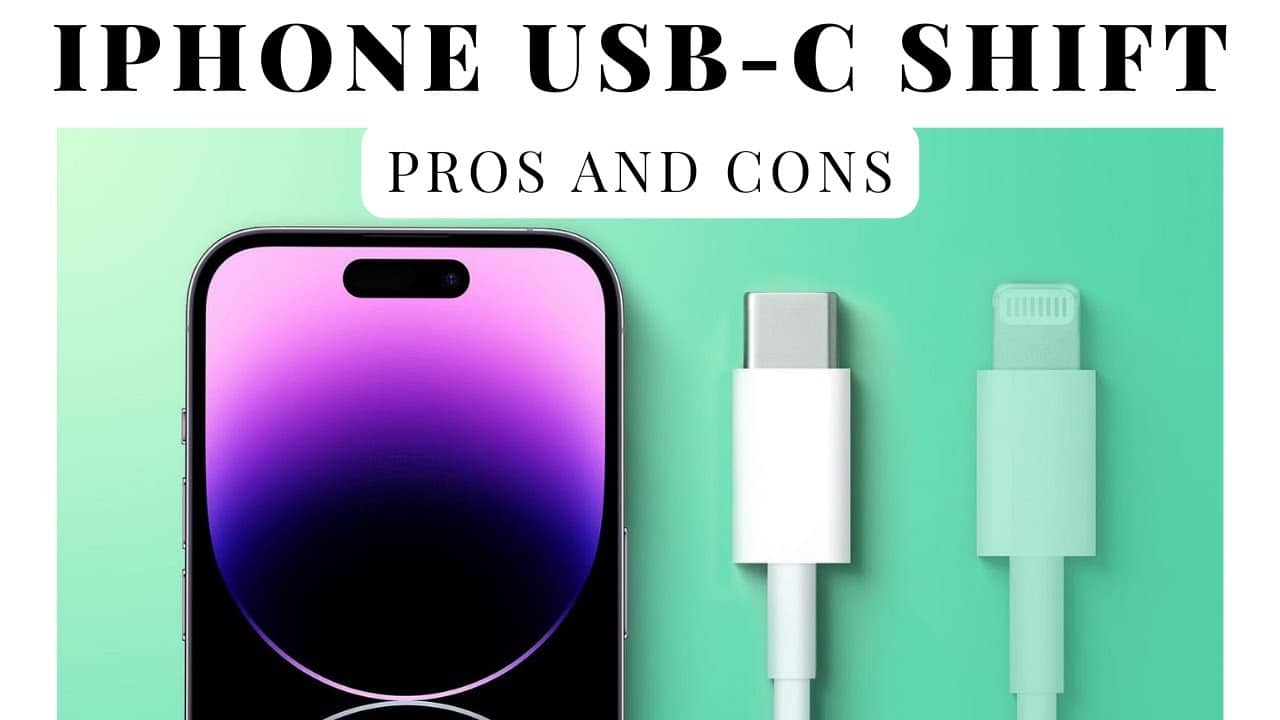iPhone 15 Type-C Port Pros and Cons

Apple’s decision to switch all smartphones in the iPhone 15 lineup from Lightning to USB-C, in compliance with the European Union’s requirements, comes with its set of advantages and disadvantages. Let’s explore the pros and cons of this significant shift in charging technology:
Pros:
1) Universal Compatibility:
One of the most significant advantages is that iPhone 15 users will be able to use a single charger not only for their iPhones but also for Macs and iPads. This simplifies the charging process and reduces the number of chargers users need to carry, promoting convenience and reducing clutter.
2) Faster Charging:
In some cases, iPhone 15 models may offer faster charging through USB-C. This is a substantial benefit for users who are always on the go and need their devices to charge quickly.
3) Wider Device Compatibility:
USB-C is a universal standard, and the cables used will be compatible with billions of third-party devices. This means users will have a broader range of accessories and charging options, fostering flexibility and choice.
4) Environmental Impact:
By adopting a universal charging standard, Apple is contributing to the reduction of electronic waste. Users won’t need to dispose of their old Lightning cables or chargers, reducing the environmental footprint of their technology usage.
Cons:
1) Loss of Licensing Revenue:
Apple’s transition to USB-C may result in a loss of licensing revenue. Accessory manufacturers that previously produced Lightning-compatible accessories will need to adapt to the new USB-C standard. This shift could affect Apple’s income from licensing fees for Lightning technology.
2) Investment of Resources:
Implementing a new charging connector and cable standard requires a significant allocation of money and resources. Apple will need to invest in research, development, and production of USB-C accessories and ensure a smooth transition for its user base.
3) Legacy Devices:
Users with older Apple devices that still use Lightning connectors may face compatibility issues. They may need to purchase adapters or new accessories to work with their existing technology.
Conclusion
In summary, Apple’s transition to a USB-C port for the iPhone 15 line offers several benefits, including universal compatibility, faster charging, wider device compatibility, and positive environmental implications.
However, it also presents challenges such as potential loss of licensing revenue, resource investment, and compatibility issues for users with older devices. Apple’s commitment to innovation and adaptation to industry standards will ultimately determine the success of this transition.
Also Read: Most Anticipated Smartphones of Fall 2023
Follow Top and Trending on Google News and receive the latest alerts and the main news about apps, technology, beauty, entertainment, and all the top 10 related posts.
